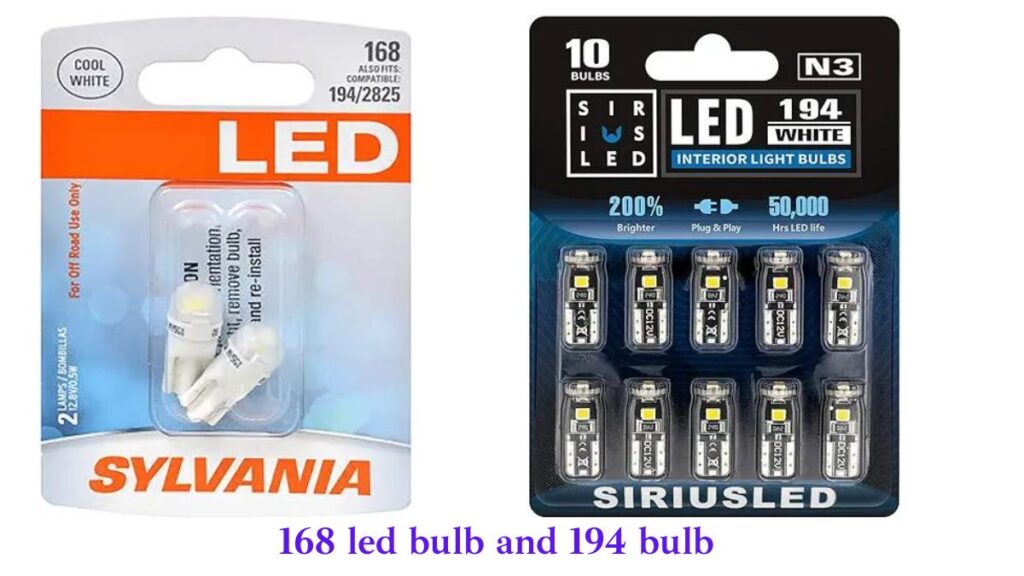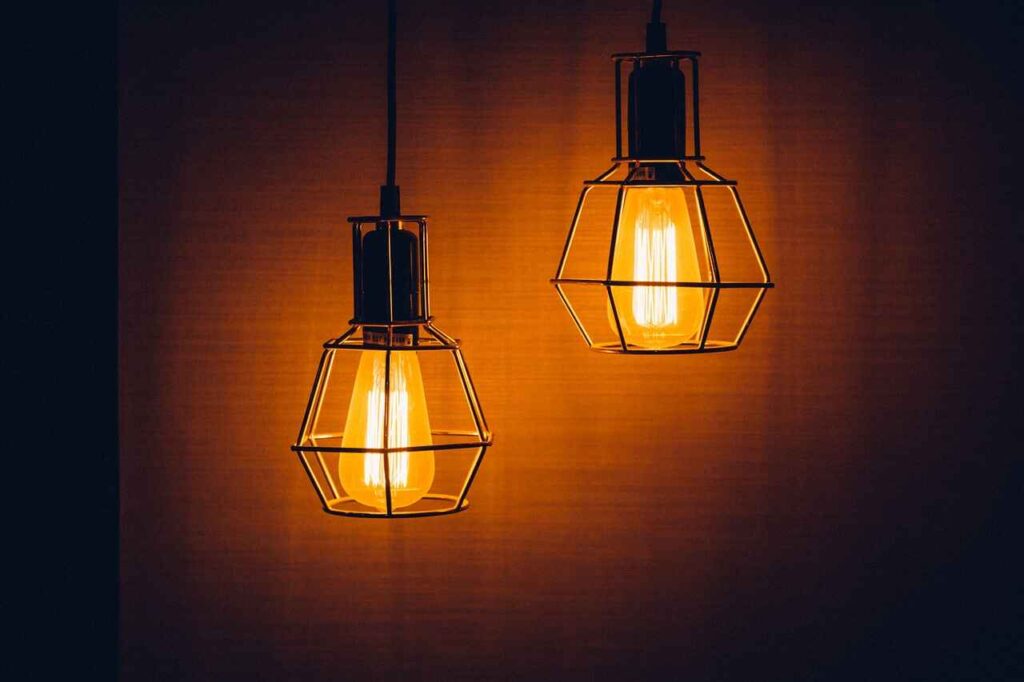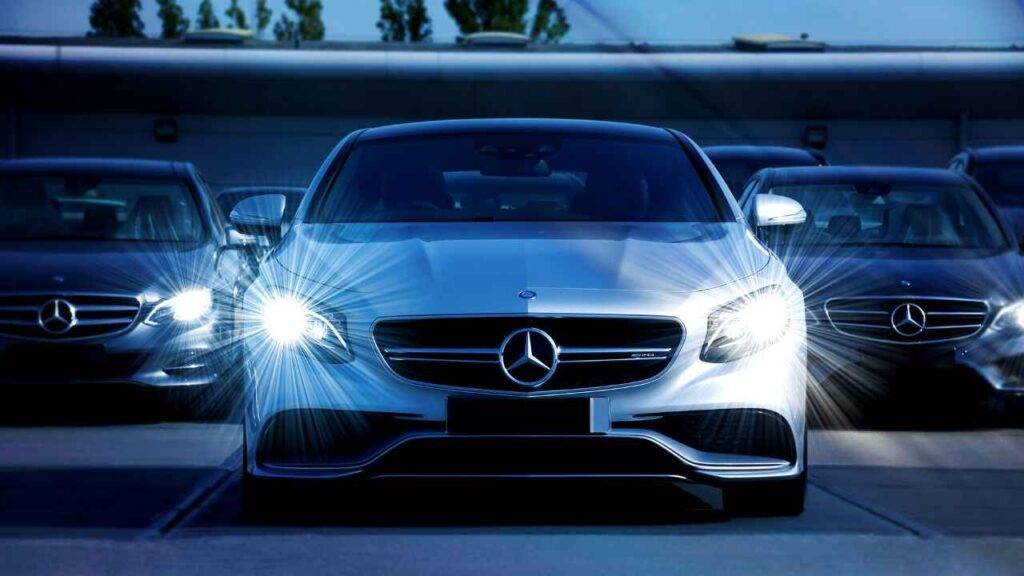Get 168, 194 and 2825 bulbs: Check on Amazon
When it comes to automotive lighting, choosing the right bulb is crucial for safety, performance, and aesthetics. If you’ve found yourself pondering the differences between 168 vs 194 vs 2825 bulbs, you’re in the right place. In this detailed guide, we will explore every aspect of these popular automotive bulbs, including 2825 vs 168 bulb, 168 vs 2825 bulb, and 194 vs 2825 bulb comparisons. Whether it’s upgrading for brightness, efficiency, or cost-effectiveness, we’ve got you covered.

Understanding the Basics: What Are 168, 194, and 2825 Bulbs?
1. 168 Bulb:
The 168 bulb is a versatile automotive bulb often used for interior and exterior lighting functions. You’ll find it in applications like side markers, license plate lights, and dashboard lights. It’s compact, efficient, and provides reliable illumination, making it a popular choice for many vehicles.
2. 194 Bulb:
The 194 bulb offers excellent brightness with minimal power consumption. It’s commonly used in parking lights, side markers, and interior car lights. If you’re comparing the 194 vs 168 bulb, the 194 is often preferred for its higher brightness.
3. 2825 Bulb:
The 2825 bulb, also referred to by its European designation, is modern and widely used in European vehicles. It excels in both performance and lifespan. Comparisons like 2825 bulb vs 168 or 2825 vs 194 bulb are common when upgrading or replacing automotive lighting.
Size Matters: Comparing Dimensions and Fitment
i) 168 Bulb Size:
The 168 bulb is compact with a small base, making it ideal for tight spaces like side markers and dashboard lights. It’s a great fit for smaller light fixtures.
ii) 194 Bulb Size:
The 194 bulb is slightly larger than the 168, allowing for more light output. This makes it suitable for applications where brightness is a priority, such as parking lights.
iii) 2825 Bulb Size:
The 2825 bulb has a more robust design compared to both 168 and 194 bulbs. If you’re wondering about 2825 vs 168 bulb size, the 2825 is typically larger and better suited for high-performance applications like tail lights.
Interchangeability and Compatibility
Are 194 and 168 bulbs interchangeable?” is a frequently asked question. The comparison of 168 and 194 bulbs reveals that, despite differences in brightness and wattage, they are generally interchangeable for many settings.
However, when comparing 2825 bulb vs 194 or 2825 vs 168, compatibility becomes more specific. The 2825 bulb equivalent may work in some fixtures, but it’s often designed for European vehicles.
For those wondering, “Is a 2825 bulb the same as a 194?” or “Are bulbs 168 and 194 identical?”, the short answer is no. While similar, their wattage and brightness differ.

Lighting Up the Differences: Performance Comparison
1. Brightness Levels:
- 194 vs 168 bulb: The 194 offers higher brightness, making it ideal for parking lights.
- 168 bulb: Slightly dimmer but suitable for interior lights.
- 2825 bulb: Provides balanced brightness for both interior and exterior applications.
2. Color Temperature and Light Quality:
Whether you choose a 168 bulb led, 2825 bulb led, or 194 bulb, most produce warm white light (2700-3000K). For a modern look, LED options offer higher color temperatures.
3. Energy Efficiency:
When comparing 168 vs 194 vs 2825 bulb, energy efficiency is key:
- 168 bulb wattage: Ranges between 3-5 watts.
- 194 bulb wattage: Slightly higher but still efficient.
- 2825 bulb wattage: Higher output but remains balanced.
Lifespan and Durability: Which Bulb Lasts Longer?
Nobody likes changing bulbs often. Here’s how the bulbs compare:
- 168 bulb: Lasts around 1,500 to 2,000 hours.
- 194 bulb: Offers a longer lifespan of 2,500 to 3,000 hours.
- 2825 bulb: Known for durability, lasting over 3,000 hours.
If you’re debating between 2825 vs 194 bulb or 194 vs 168 bulb wattage, consider longevity alongside energy consumption.

Installation and Replacement: DIY or Professional Job?
Replacing bulbs like 168 automotive bulb, 194/168 bulb, or 2825 light bulb is often a simple DIY task. Follow these steps:
- Turn off your car and open the light assembly.
- Carefully remove the old bulb (168, 194, or 2825).
- Insert the new bulb and ensure it’s secure.
- Test the light before closing the assembly.
Common Mistakes to Avoid
- Touching bulbs with bare hands.
- Using incompatible bulbs (e.g., 158 bulb vs 194 or 2821 vs 2825 bulb).
- Ignoring the owner’s manual for the correct fit.
LED Alternatives: The Future of Automotive Lighting
For a brighter, longer-lasting option, consider LED equivalents:
- LED 168 bulb: Energy-efficient and durable.
- 2825 LED bulb vs 194: Provides excellent illumination with low energy consumption.
- 168 bulb led equivalent: Lasts up to 50,000 hours.
Before upgrading, check your vehicle compatibility and laws in your region.
Conclusion: 168 vs 194 vs 2825 bulb
Choosing between 168, 194, and 2825 bulbs doesn’t have to be complicated. Whether you prioritize brightness, longevity, or efficiency, each bulb has its strengths. If you’re still unsure, consider the following:
- For brightness: Choose the 194 bulb.
- For balance and versatility: Go for the 2825 bulb.
- For compact efficiency: The 168 bulb is your best bet.
Whether it’s 194 vs 168 bulb, 2825 bulb vs 168, or sylvania 2825 used for specific applications, upgrading your car’s lighting can significantly enhance your driving experience. Don’t hesitate—pick the right bulb today and drive with confidence!
Hi, I’m Malik Suhail—an SEO expert, web designer, and passionate blogger with 2 years of experience. I specialize in crafting content that is not only informative but also tailored to meet the needs of my readers.
I write about diverse topics, always striving to simplify complex ideas and provide valuable insights that resonate with my audience. Whether it’s about SEO strategies, web design trends, or blogging tips, I am committed to delivering well-researched, practical, and easy-to-understand information.
My mission is to help readers navigate the digital world with confidence and clarity. I believe in adding value through authentic content that inspires action and delivers results.


